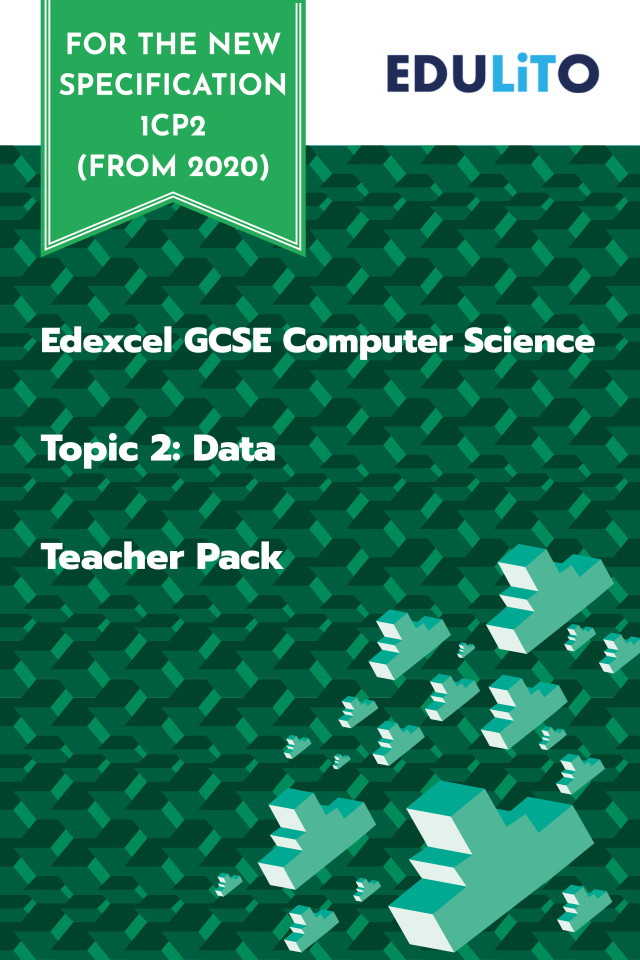- Edexcel GCSE Computer Science 1CP2 (from 2020)
- >
- Teacher Pack: Topic 2 Data 1CP2 (from 2020)
Teacher Pack: Topic 2 Data 1CP2 (from 2020)
The resources within this Teacher Pack cover all aspects of the specification in relation to Edexcel GCSE Computer Science 1CP2 (from 2020) topic 2.
It includes a:
· Teaching PowerPoint (includes checkpoint questions and answers)
· Student PowerPoint (Includes checkpoint questions, but omits the answers)
· Homework/Classwork Activities (+ mark schemes)
o Data Capacity
o Conversions
o Compression
· End of unit test (+ mark scheme)
Content Covered:
· understand that computers use binary to represent data (numbers, text, sound, graphics) and program instructions and be able to determine the maximum number of states that can be represented by a binary pattern of a given length
· understand how computers represent and manipulate unsigned integers and two’s complement signed integers
· be able to convert between denary and 8-bit binary numbers (0 – 255, -127 – 128)
· be able to add together two positive binary patterns and apply logical and arithmetic binary shifts
· understand the concept of overflow in relation to the number of bits available to store a value
· understand why hexadecimal notation is used and be able to convert between hexadecimal and binary
· understand how computers encode characters using 7-bit ASCII
· understand how bitmap images are represented in binary (pixels, resolution, colour depth)
· understand how analogue sound is represented in binary (amplitude, sample rate, bit depth, sample interval)
· understand the limitations of binary representation of data (sampling frequency, resolution) when constrained by the number of available bits
· understand that data storage is measured in binary multiples (bit, nibble, byte, kibibyte, mebibyte, gibibyte, tebibyte) and be able to construct expressions to calculate file sizes and data capacity requirements
· understand the need for data compression and methods of compressing data (lossless, lossy)


